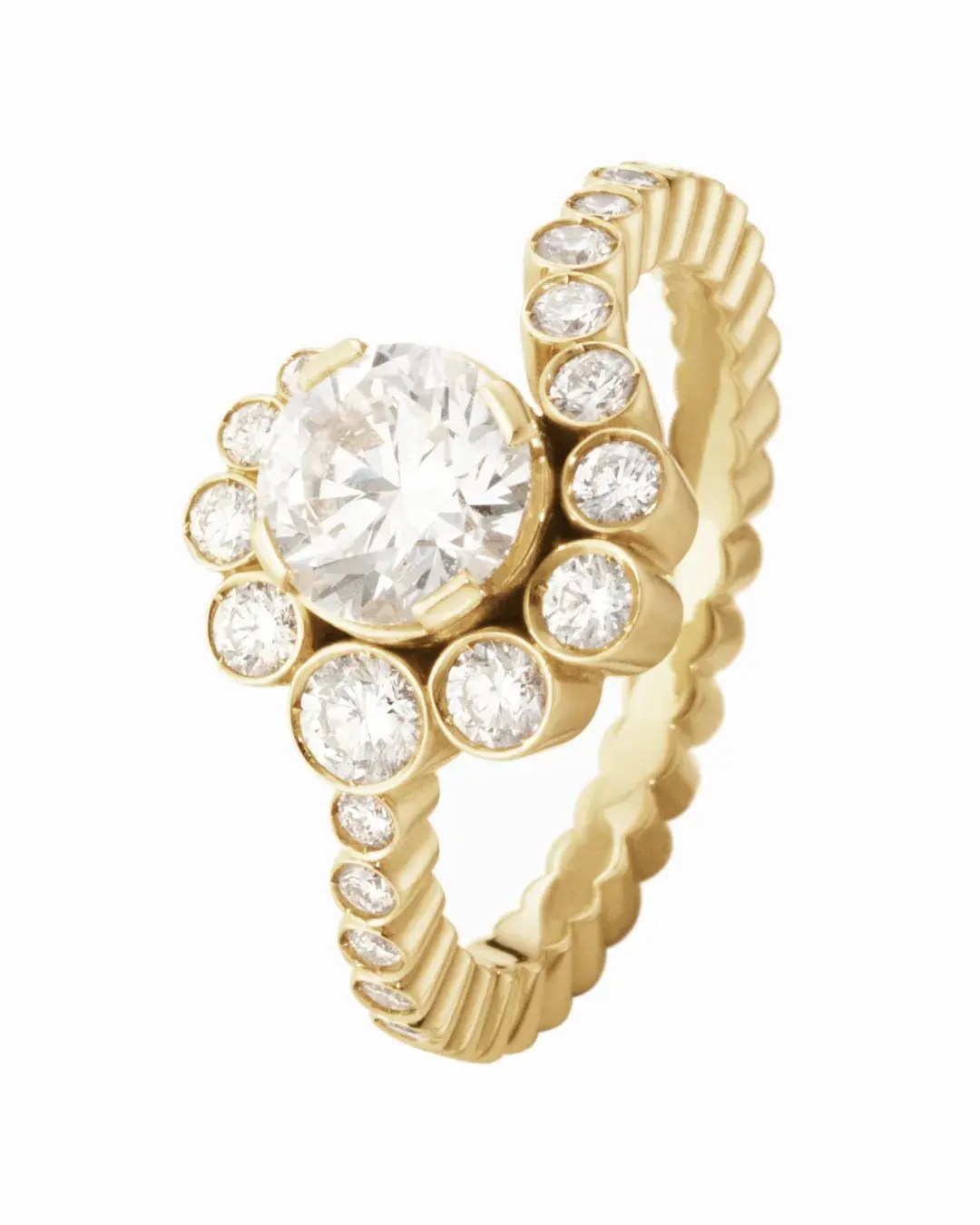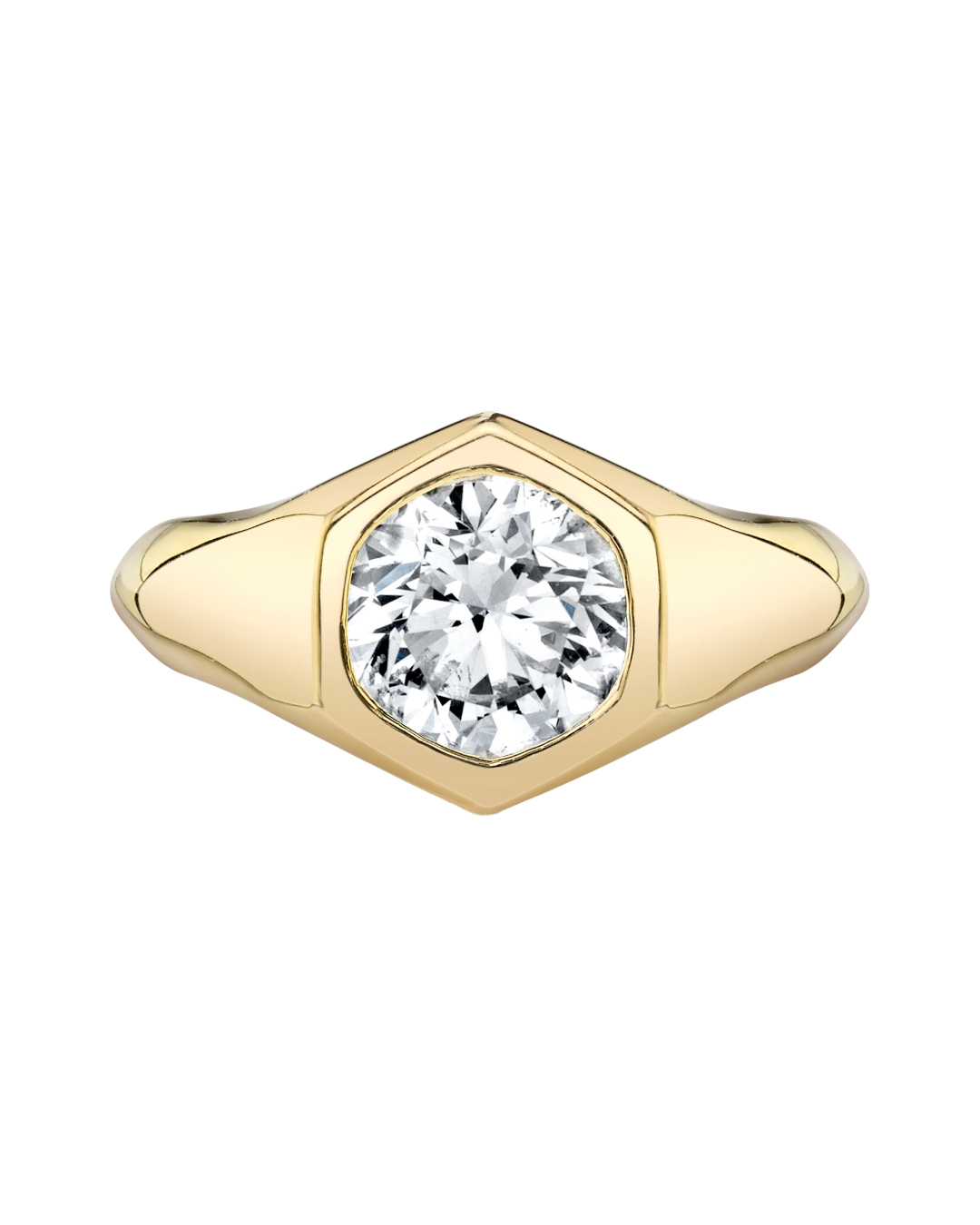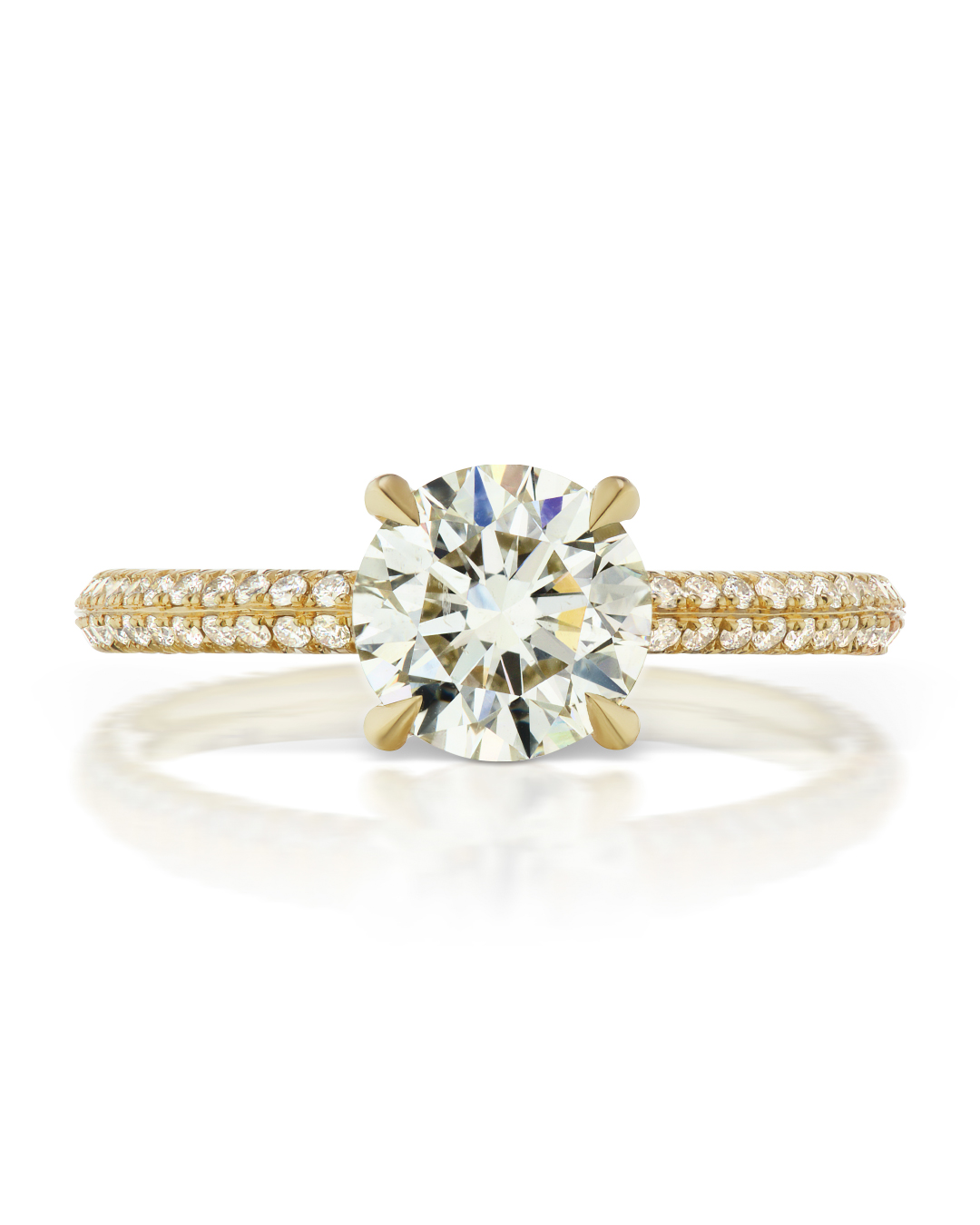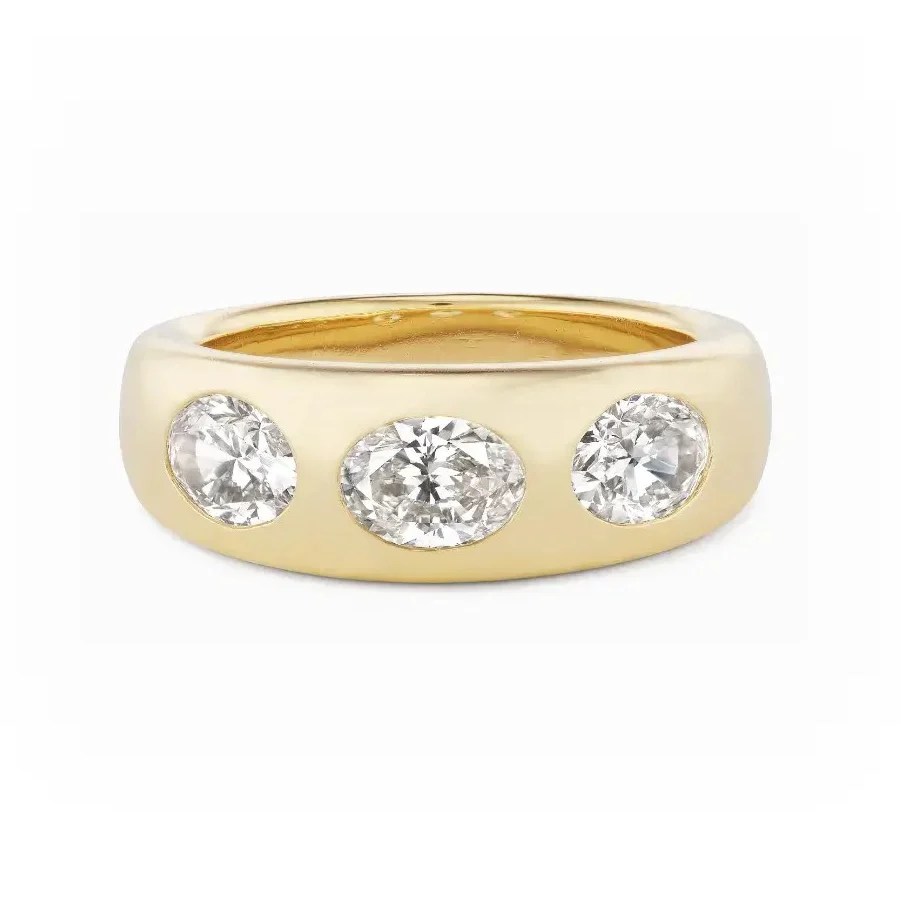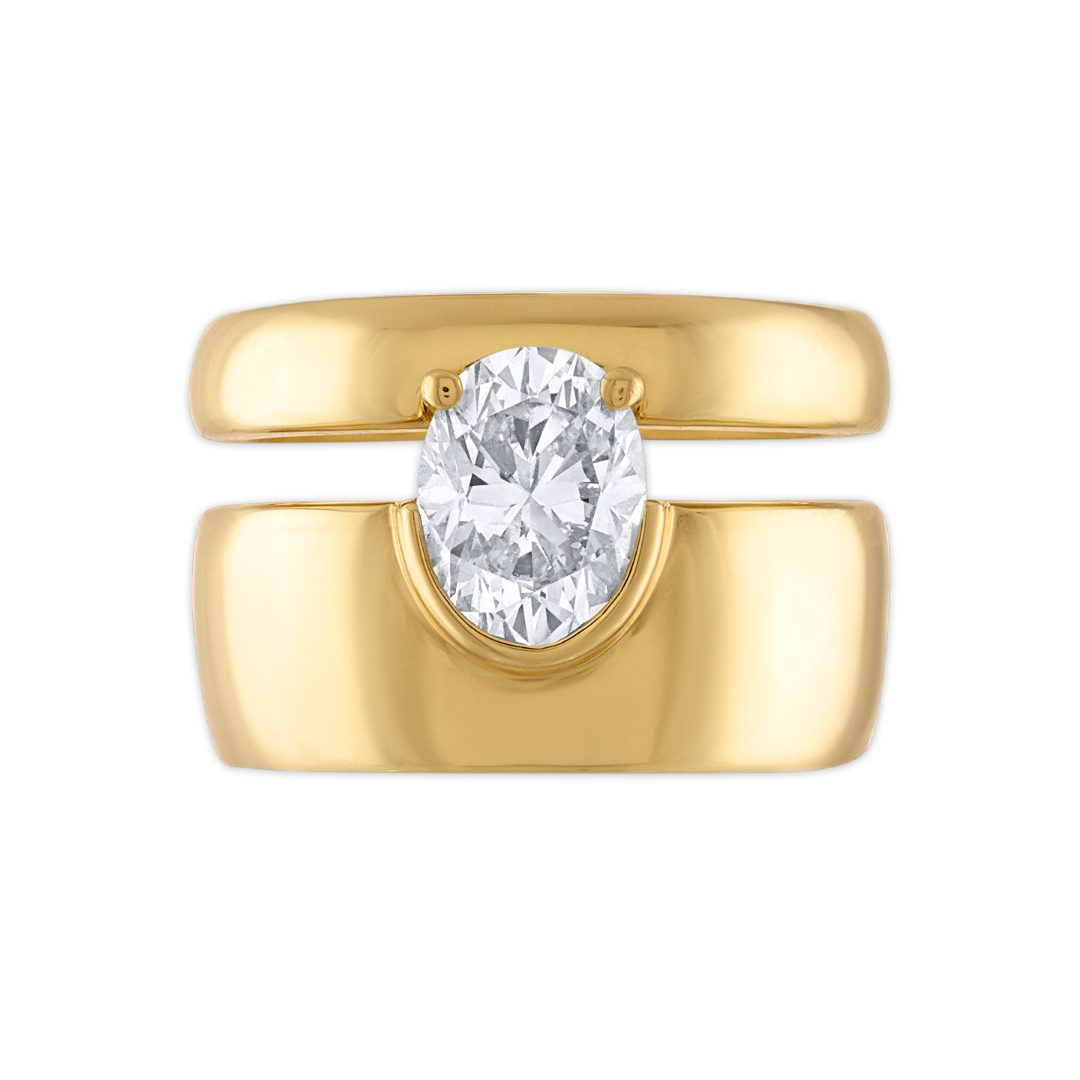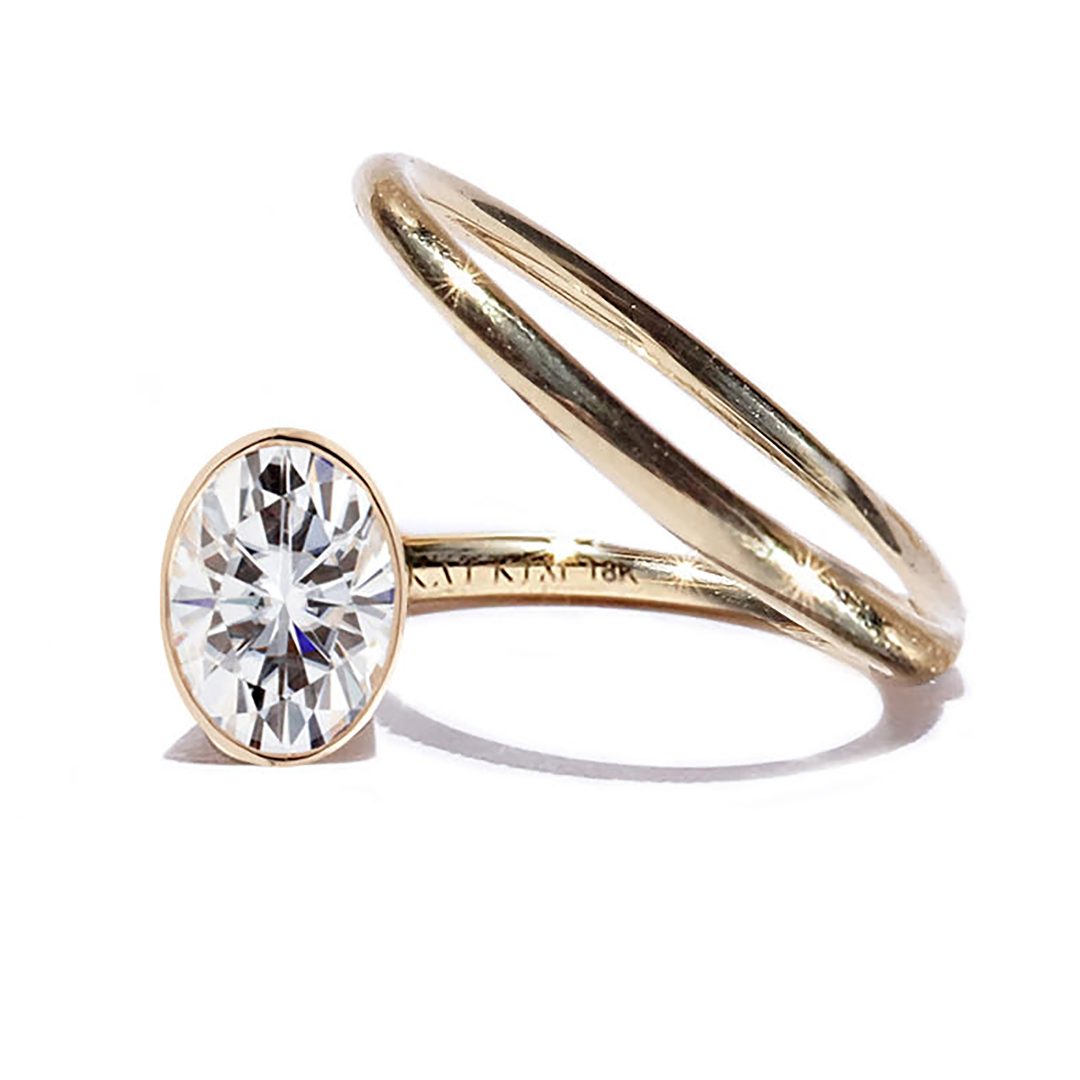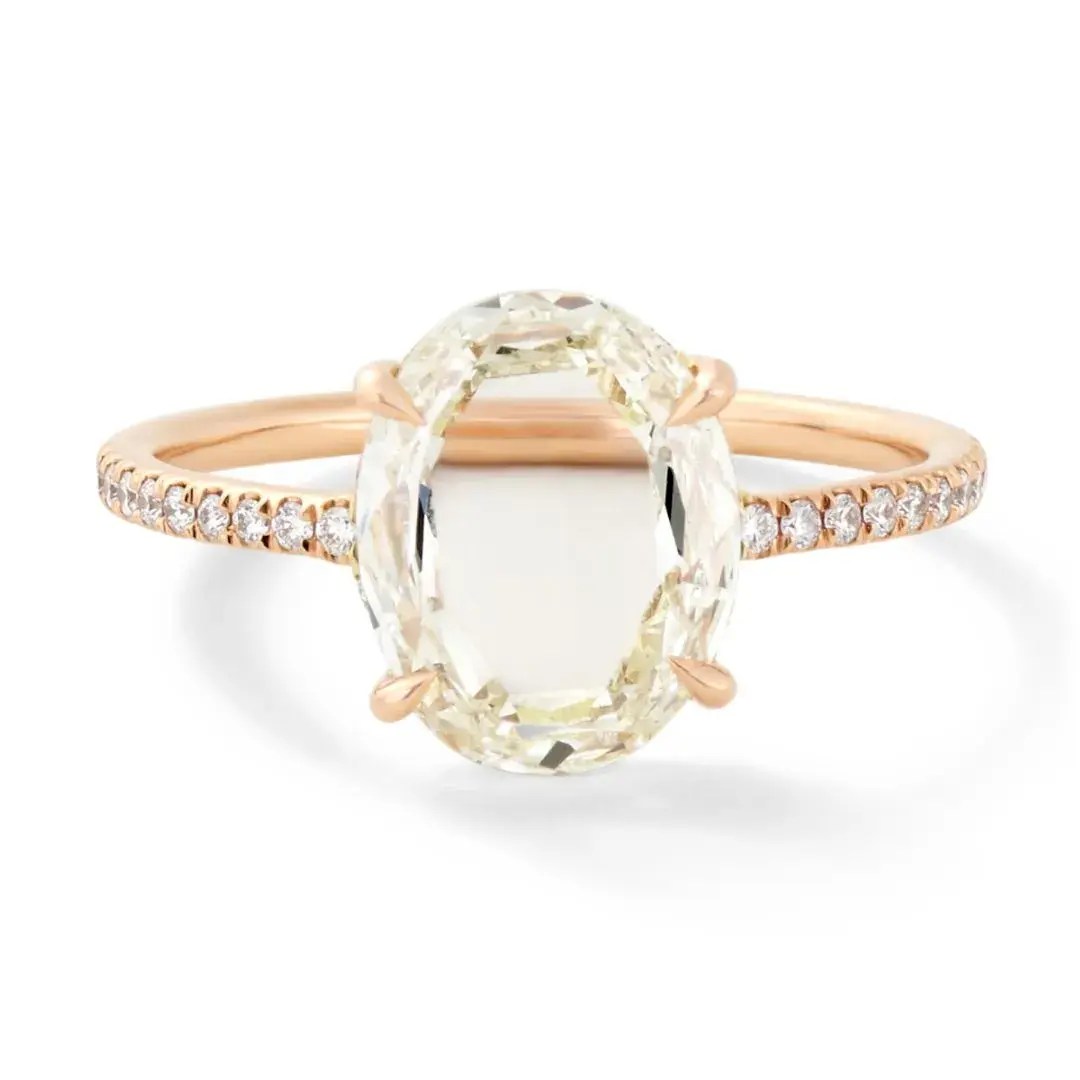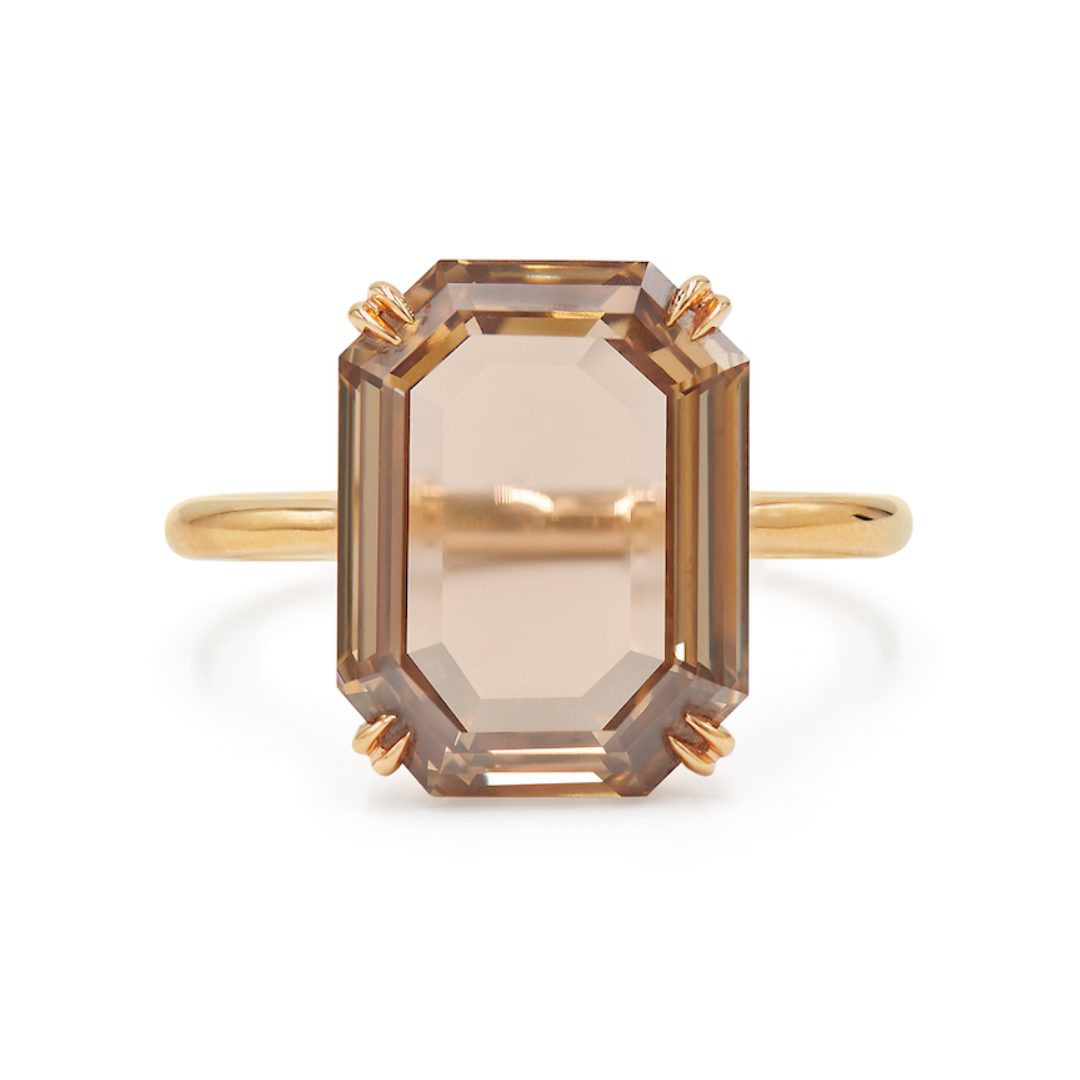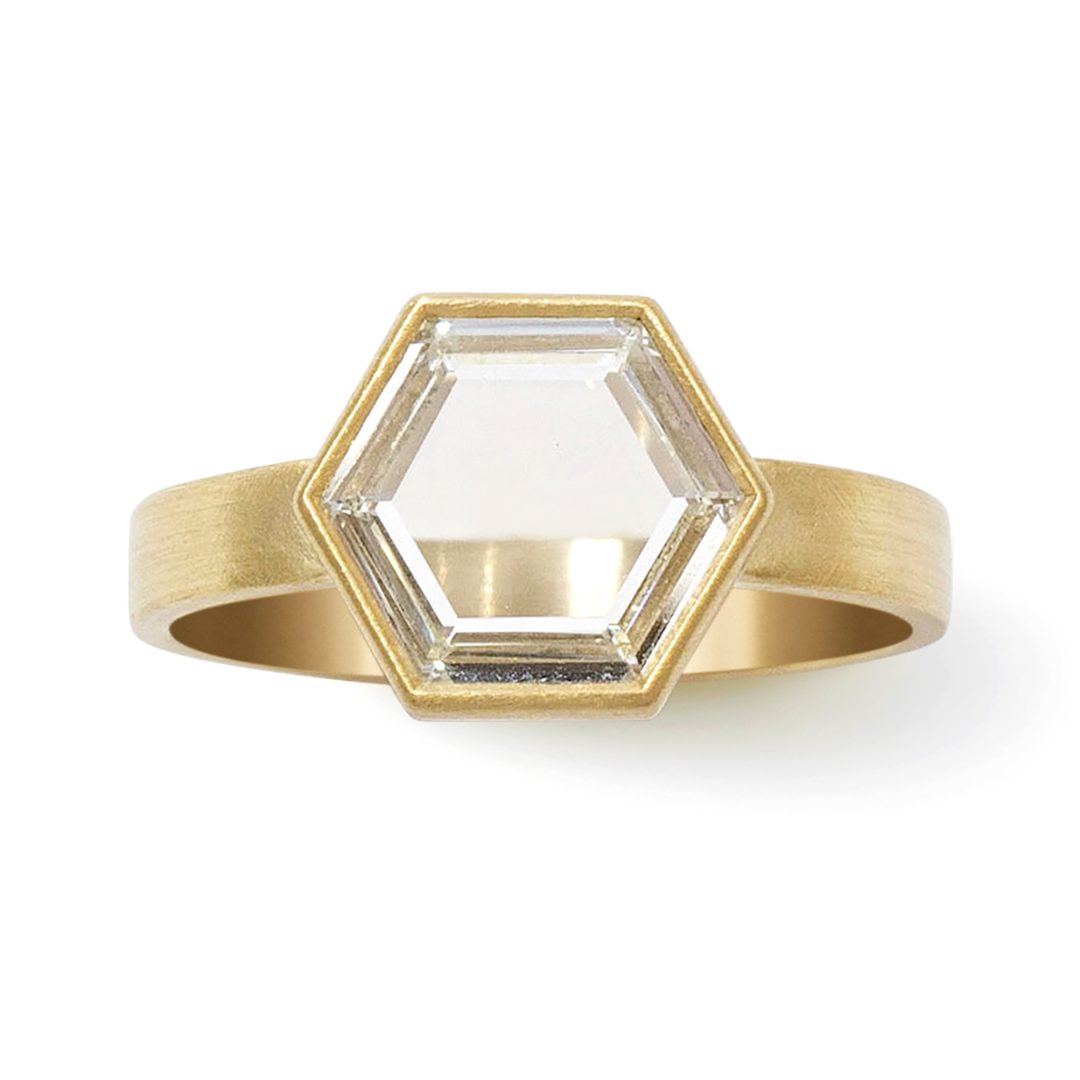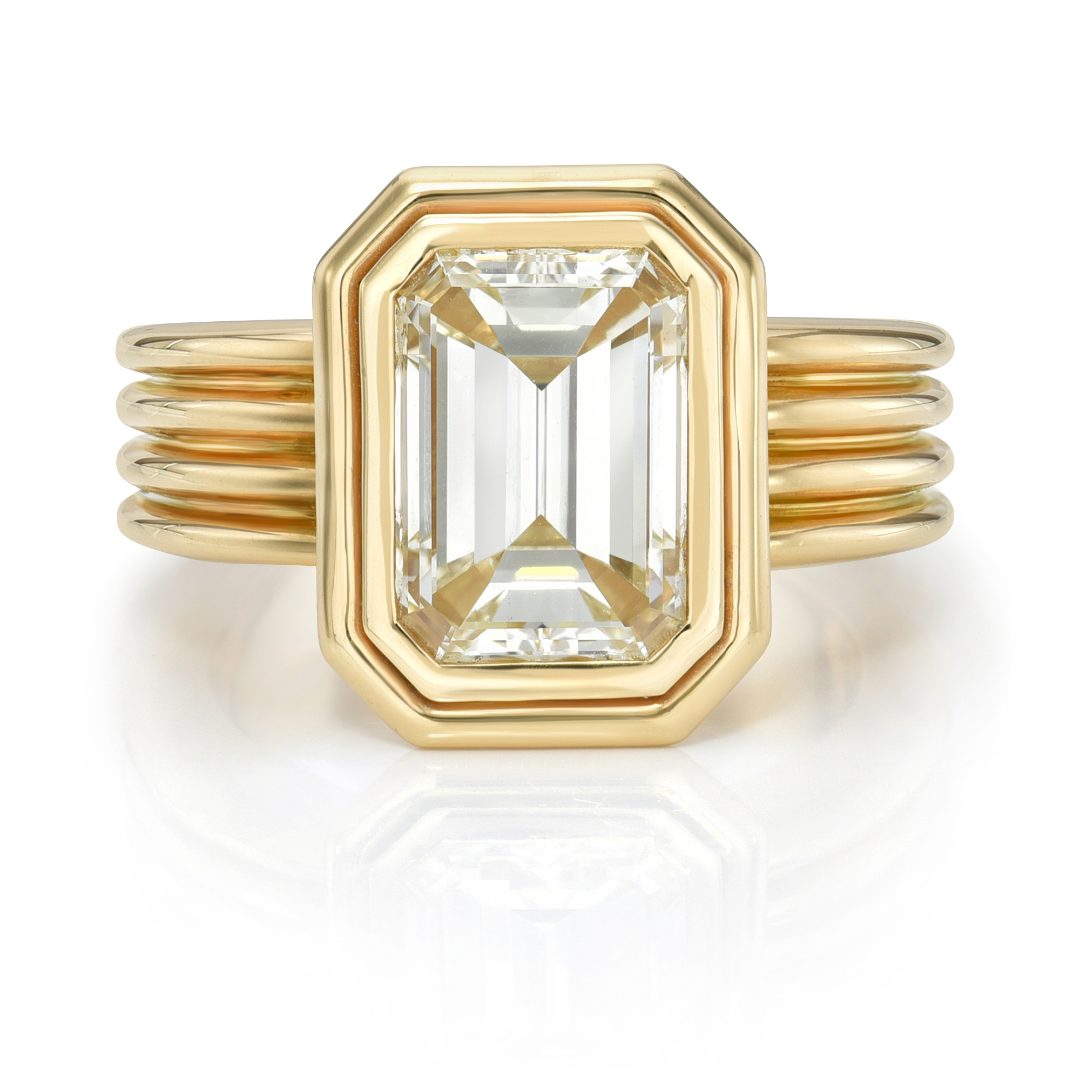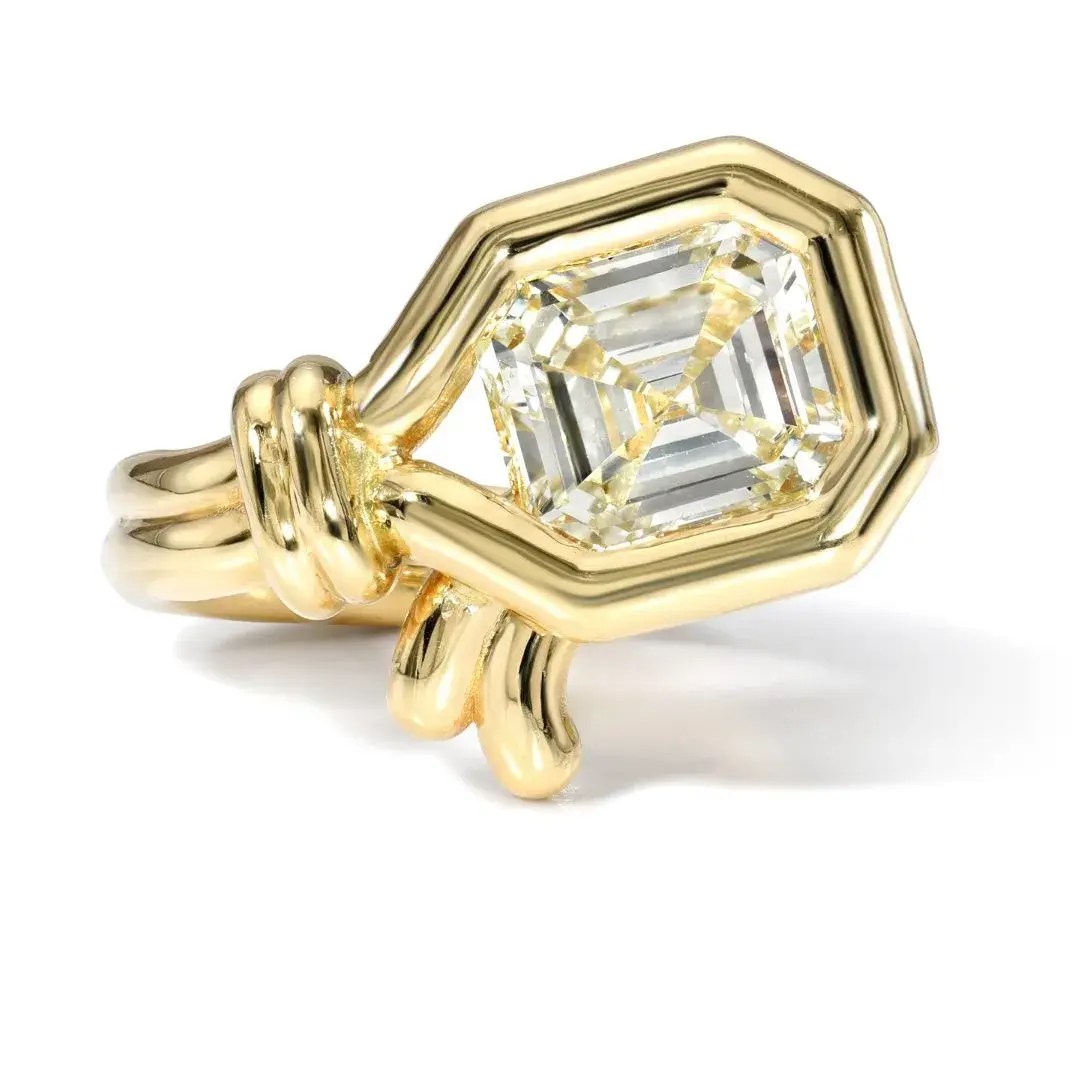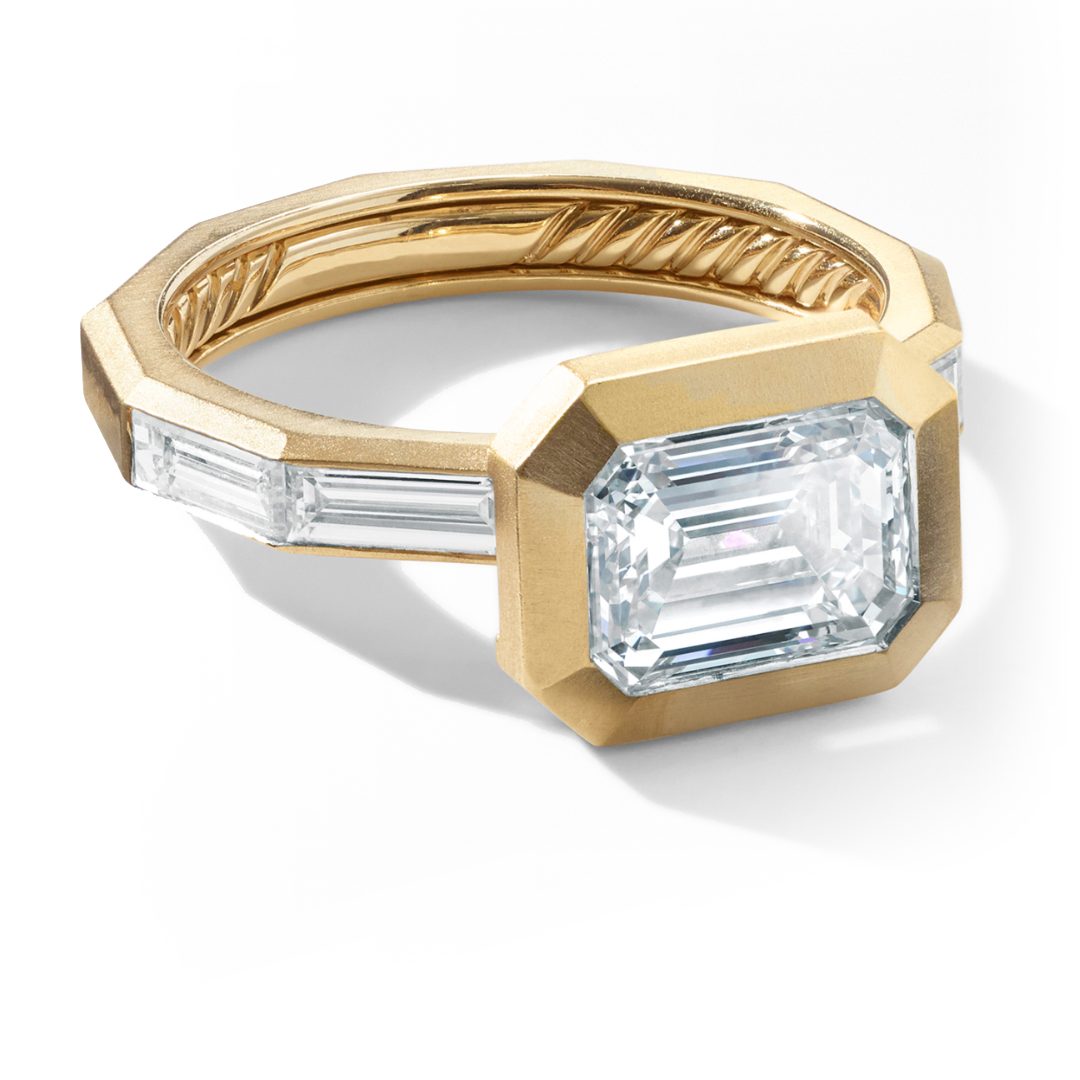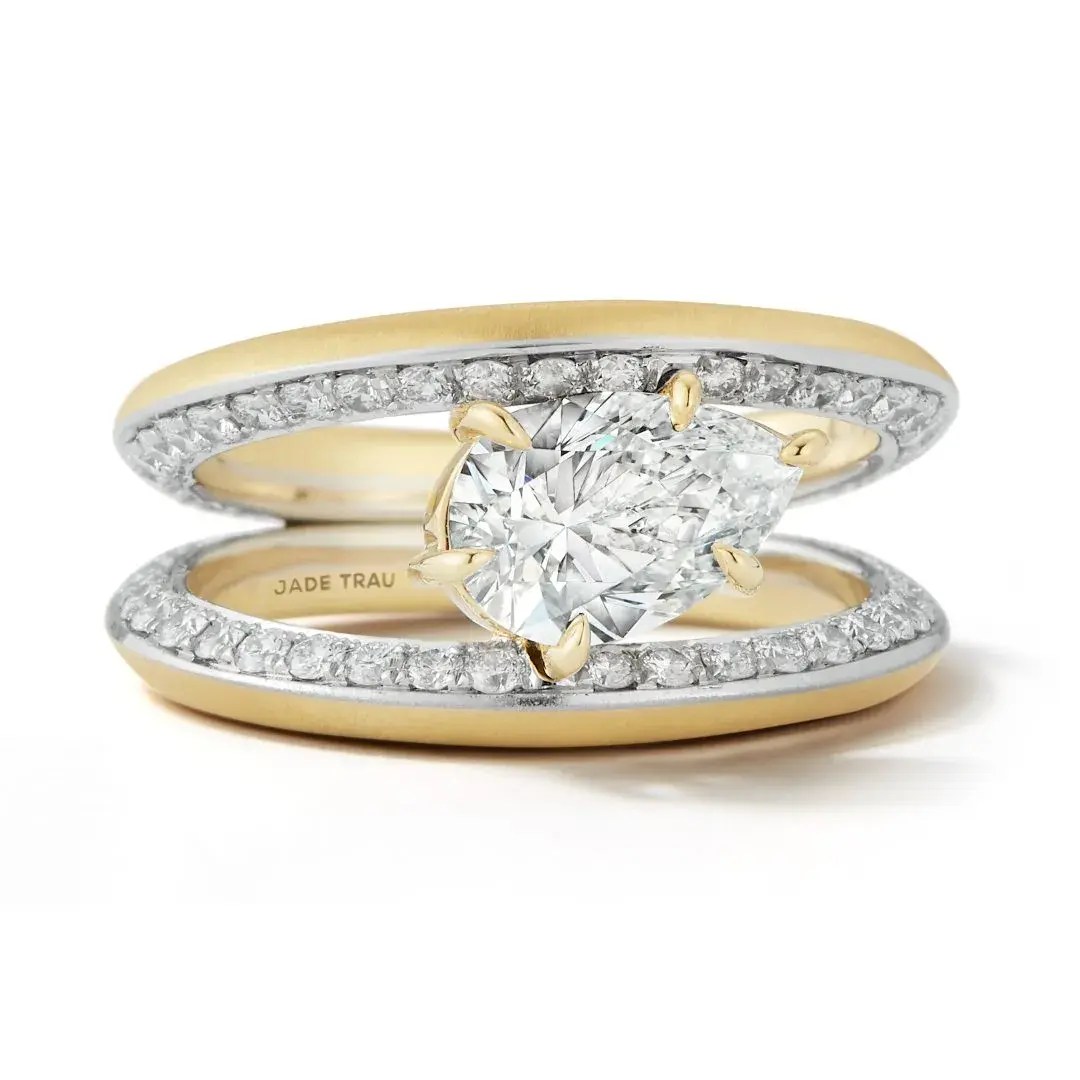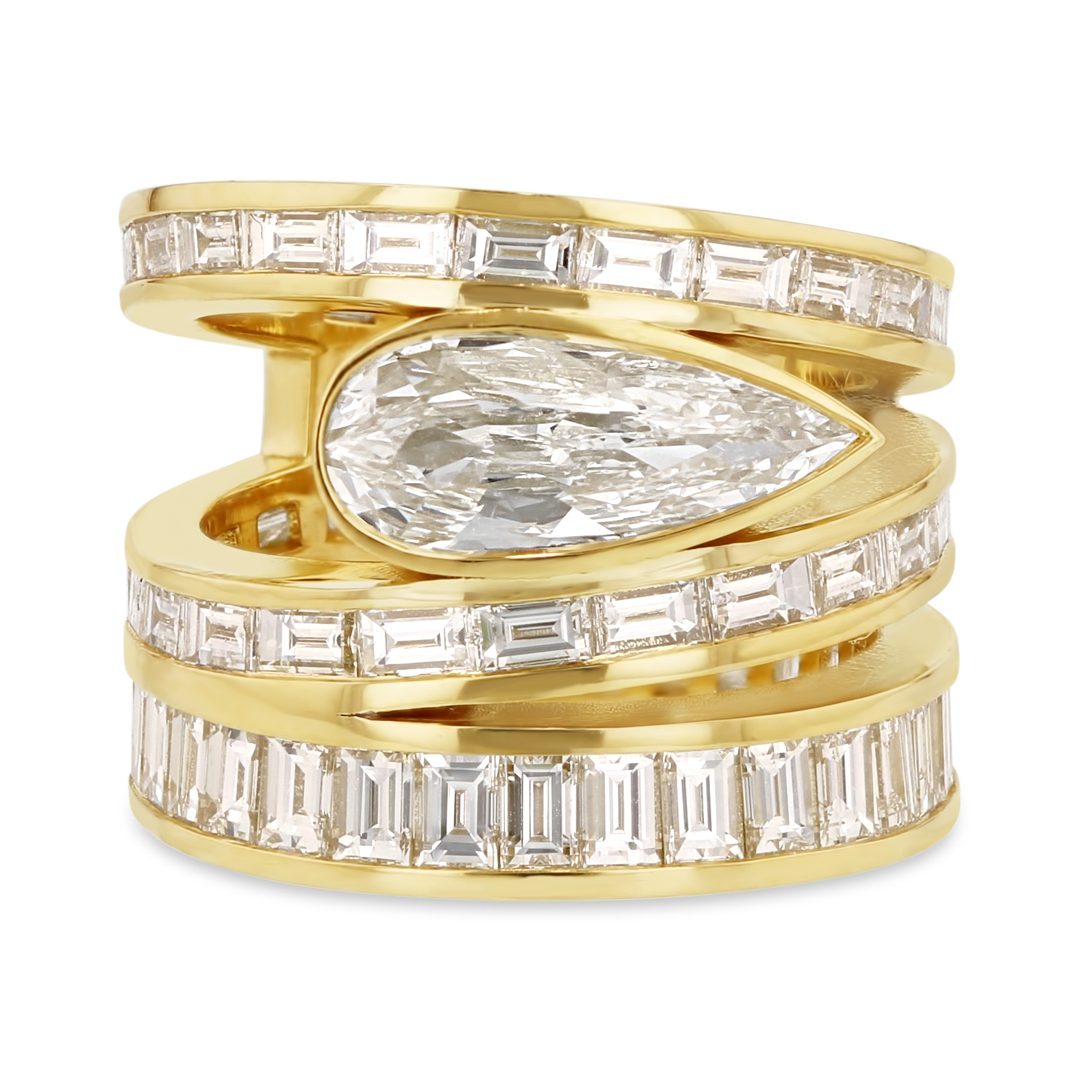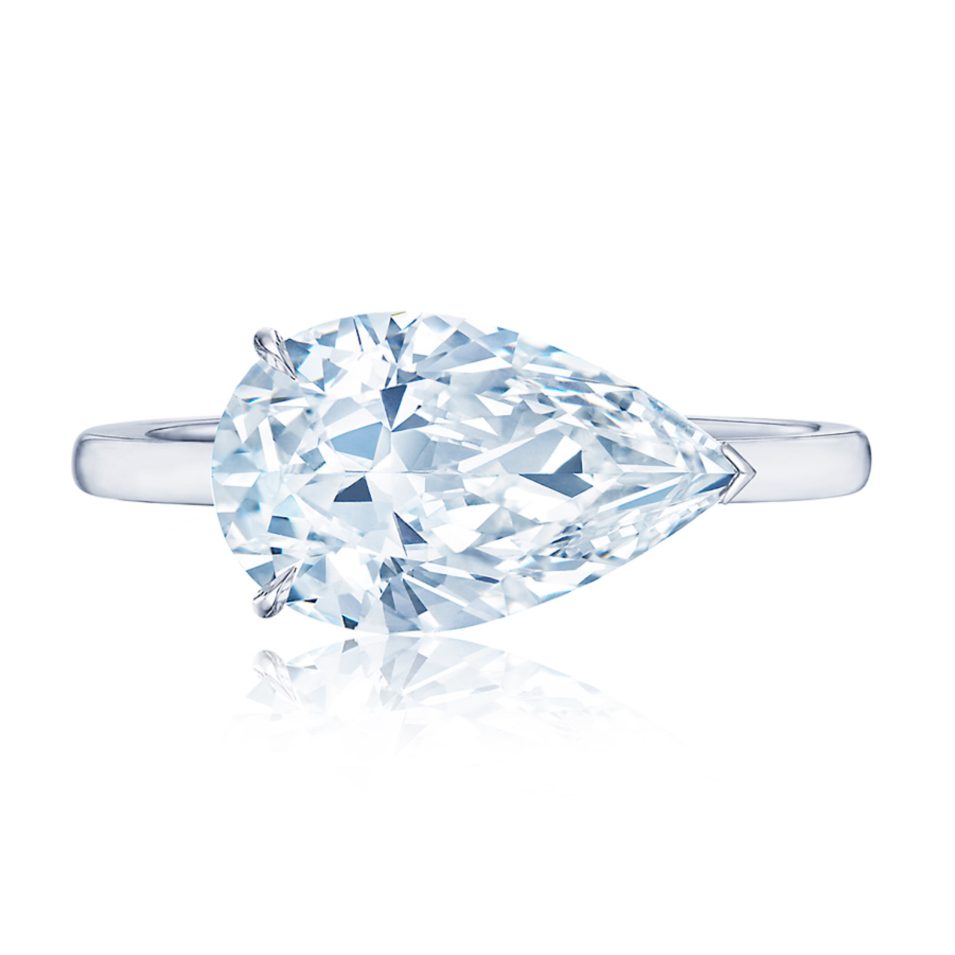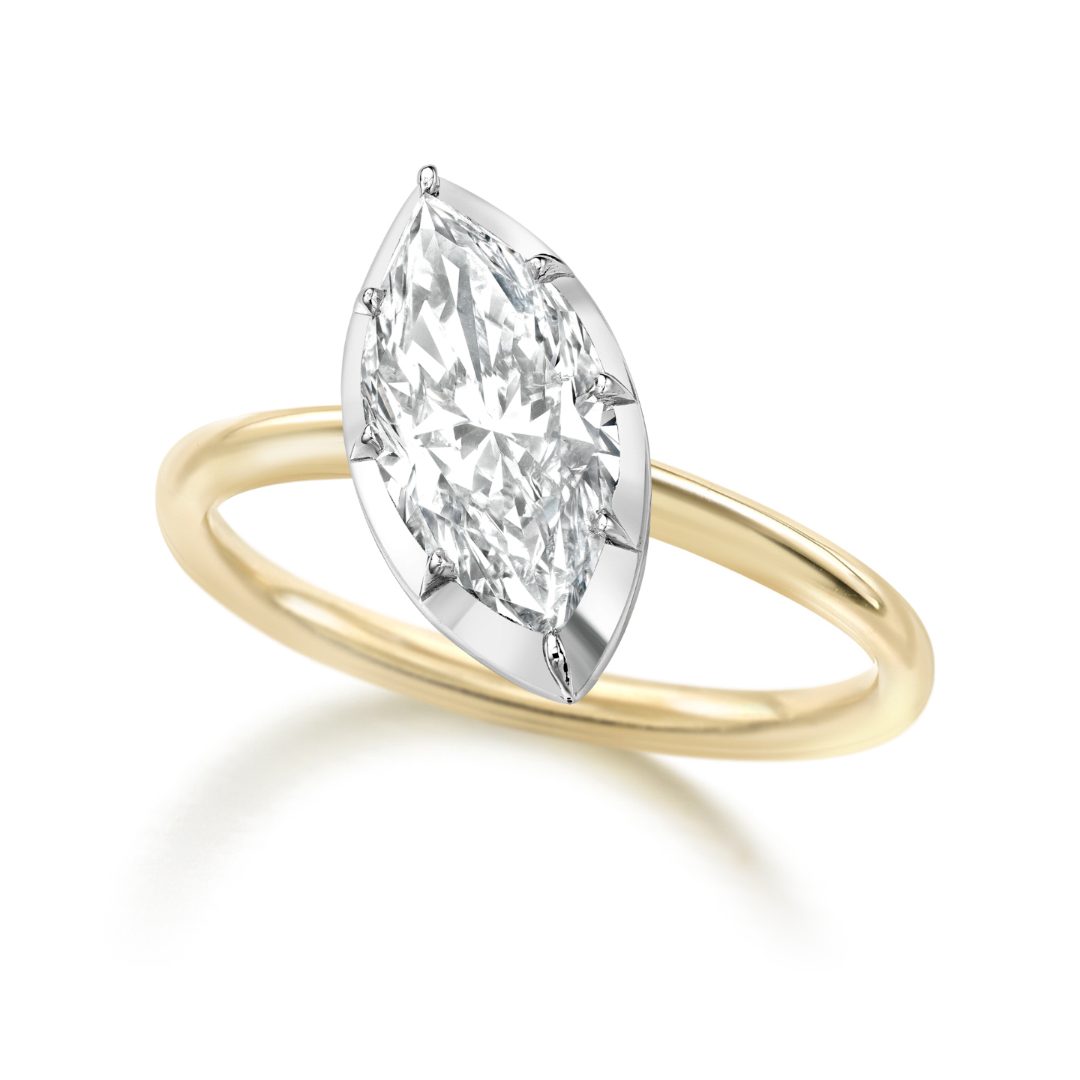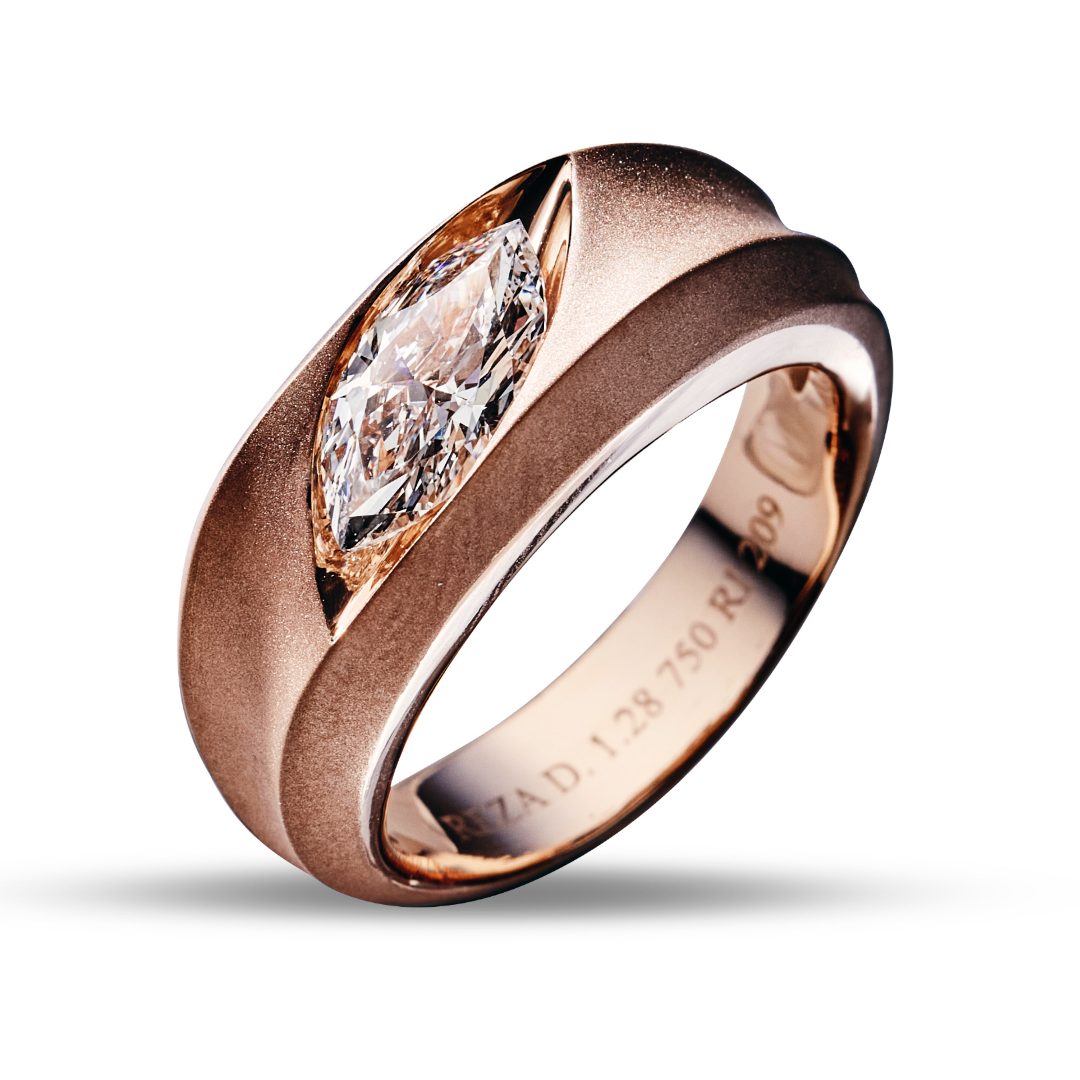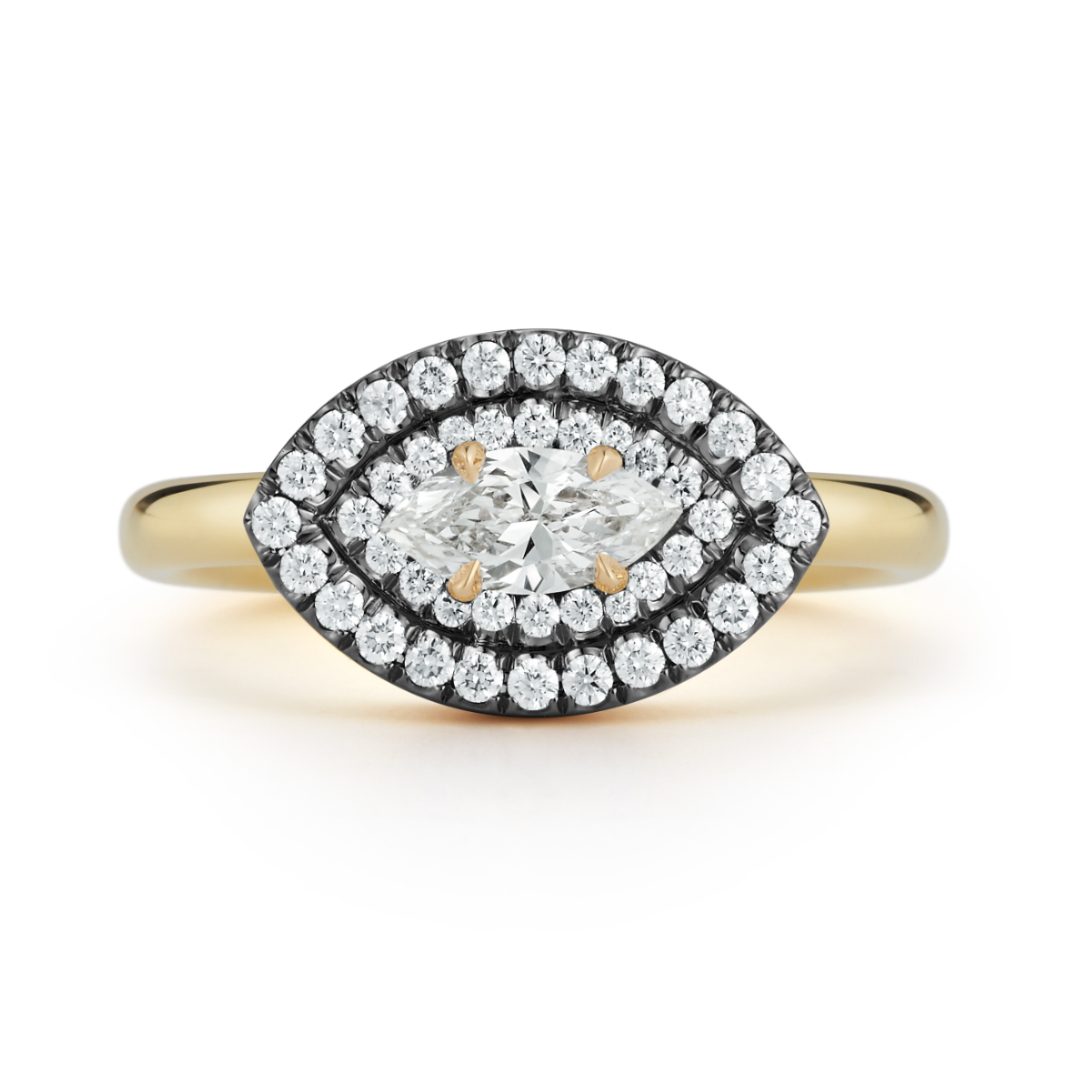Get Into Shape: Find Your Perfect Diamond Engagement Ring
Choosing a diamond shape that matches your personal style is the ultimate engagement ring flex.
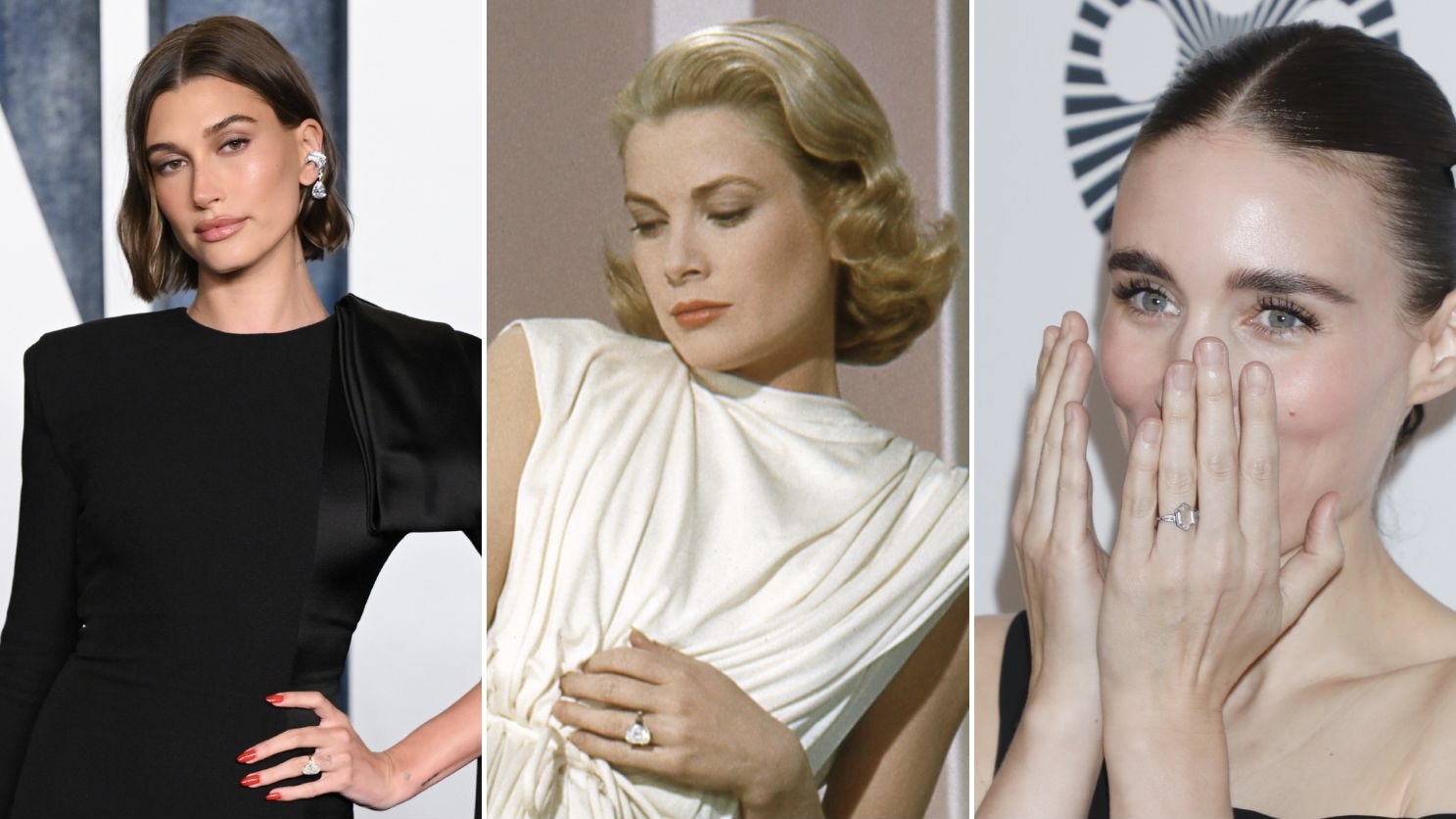
“Square-cut or pear-shape these rocks don’t lose their shape,” was one of the playful lyrics Marilyn Monroe belted out in her legendary rendition of “Diamonds Are A Girl’s Best Friend.” The line was, obviously, in jest. Diamonds don’t lose their shape. The details of a diamond’s shape, however, can get lost in the discussion of the 4Cs—color, cut, clarity and carat weight—surrounding engagement rings.
So, what is shape? It’s a physical description. Most diamond shapes clearly describe the silhouette of the girdle (or center line) of a gem such as round, oval and pear. Other shapes are named after the people who designed them. The term Asscher comes from Joseph Asscher who conceived the shape in 1902. There are also idiosyncratic examples like the emerald cut that was designed in the 1920s and named after the most popular shape for emeralds.
You see why a comedic song like “Diamonds Are A Girl’s Best Friend” fits the spirit of this story, right? The subject of shape can be quirky, but it’s so important.
A diamond’s shape sets the mood of an engagement ring more than any other element of the design. There are a countless number of diamond shapes to choose from. On these pages we have selected some of the hottest and eternally popular shapes set in an array of classic and cool engagement rings. Hopefully you will find a new best friend among them.
ROUND BRILLIANT
The round brilliant, also referred to as a round brilliant cut, is the icon of diamond shapes. It has been far and away the most popular diamond shape for engagement rings since it was conceived by Marcel Tolkowsky in 1919. The Belgian lapidary redesigned round diamonds into round brilliants giving them 58 impeccably placed facets. An ideal blend of art and science, the arrangement of facets makes light bounce up through the top of the diamond. The bright light of the shape is one big reason it’s been the queen of the category for so long. The other is its versatility. Round brilliants give a classic touch to just about any type of design.
OVAL
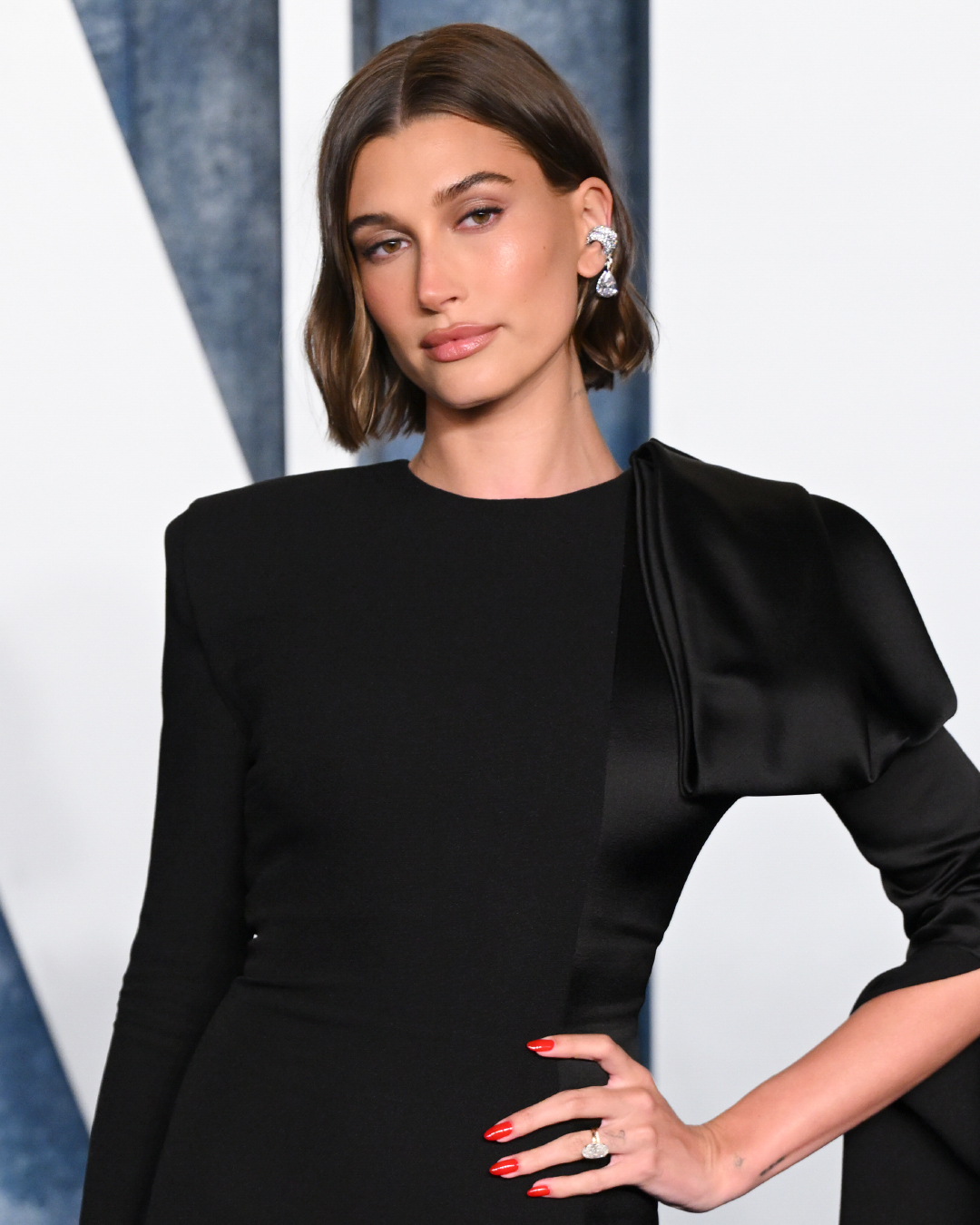
The “It Girl” of diamond shapes today is the oval. Blake Lively, Hailey Bieber and Kourtney Kardashian are a few who sport one on the third finger of their left hand. Marlo Laz designer Jesse Marlo Lazowski credits the success of ovals to the “elegant and sophisticated” look of the shape. Ovals shine almost as brightly as round brilliants. They also give the illusion of elongating a hand. While Blake, Hailey and Kourtney wear their oval diamonds set relatively simply in prong settings on slender bands, there are lots of bold and artistic alternative ways to wear the shape.
PORTRAIT
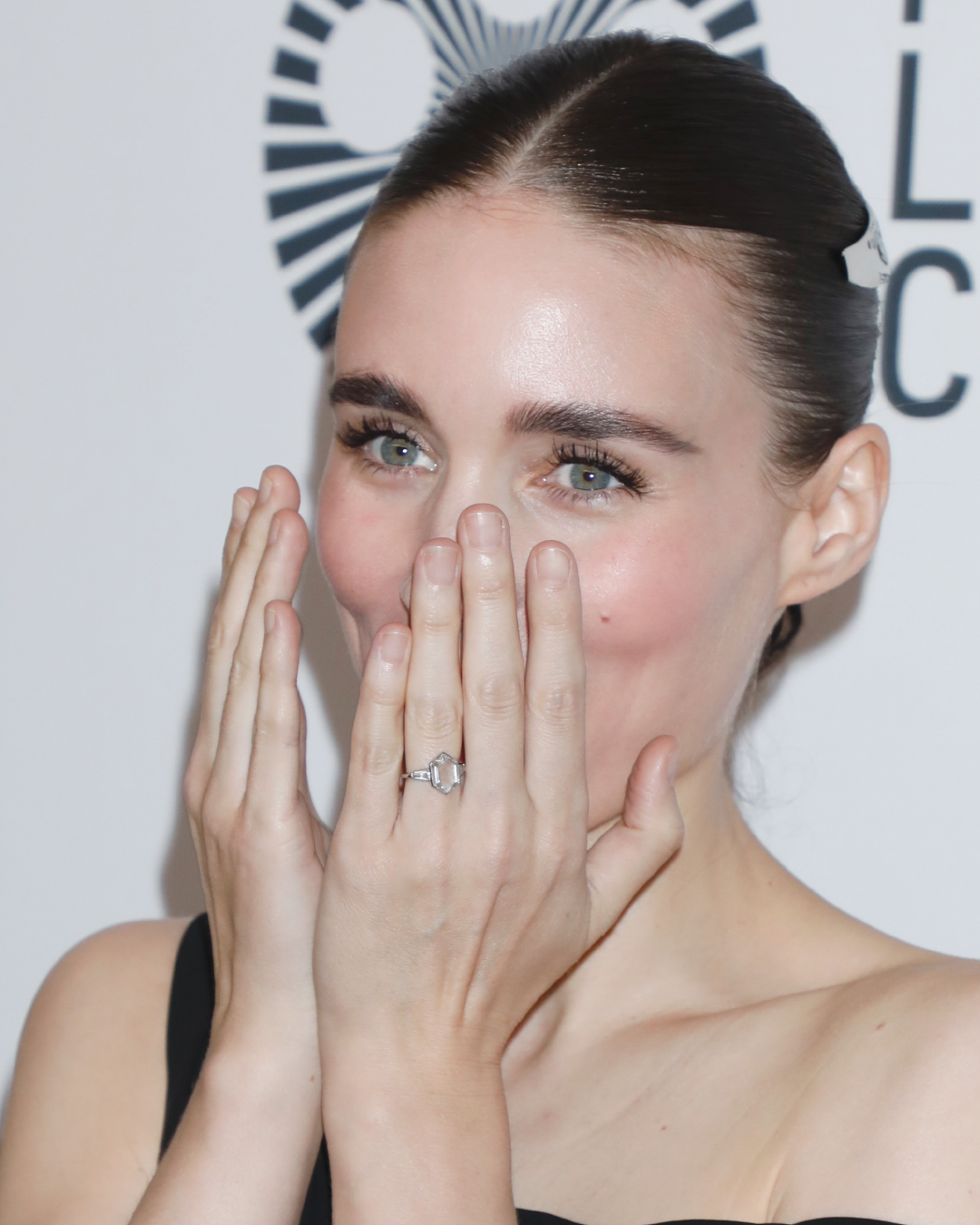
Super subtle portrait shape diamonds resemble a piece of glass, but they do have a shine that’s decidedly diamond-y. The flat shape featuring facets on the border got its name from the way it was originally used in jewelry. Dating as far back as the 17th century in India, portrait shape diamonds were set on top of miniature portraits like the glass in a picture frame.
Today, several imaginative designers have included the stylish shape as the center stone of an engagement ring. Actress Rooney Mara is one of the first high profile stars to wear a portrait cut diamond engagement ring and the jewel fits her understated style to perfection.
EMERALD & ASSCHER
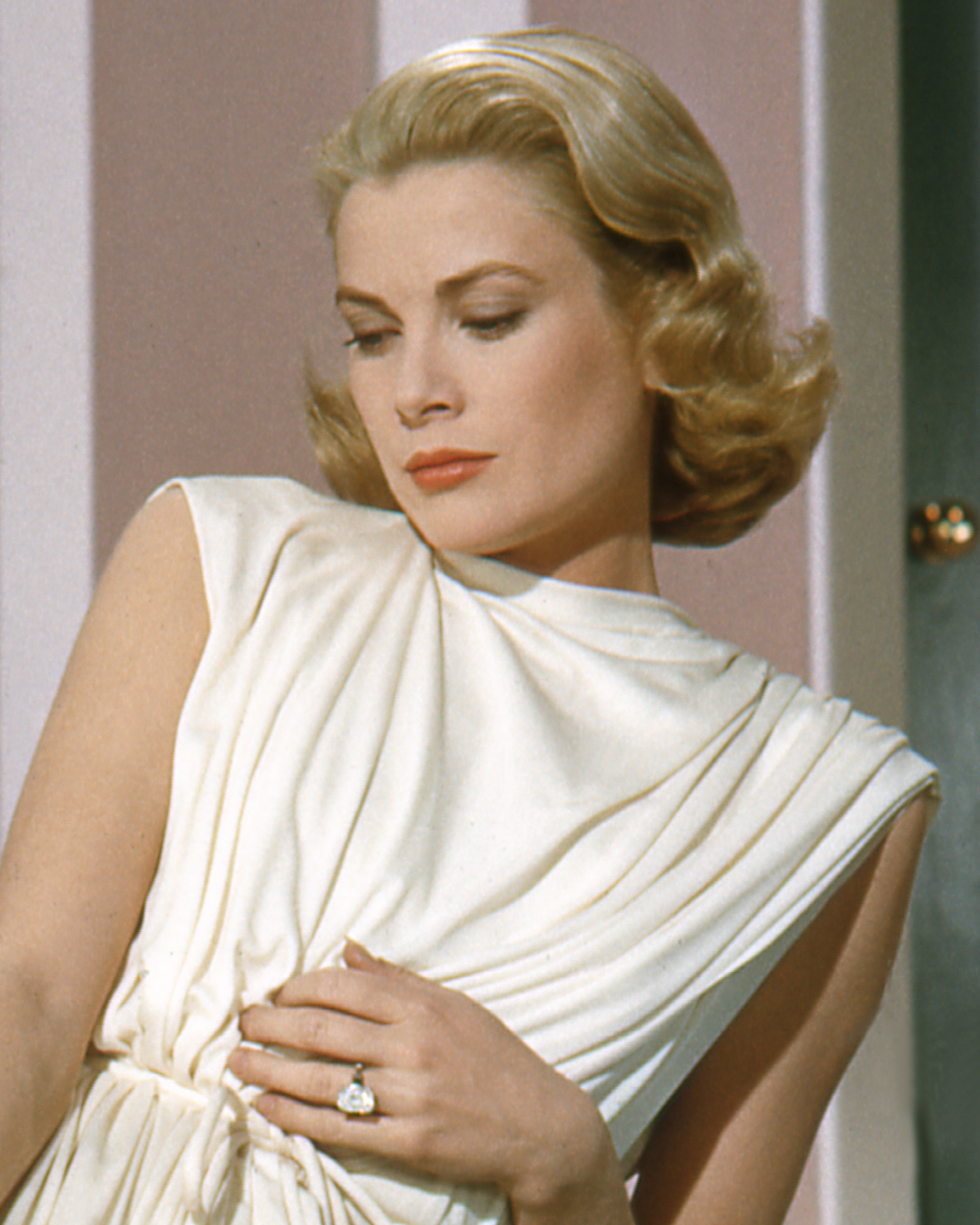
Two glamorous Hollywood legends popularized the sister shapes, emerald and Asscher, decades ago. The 10.48-carat emerald cut diamond engagement ring Grace Kelly received in 1956 is still one of the most beloved engagement rings in the world. And the 33.19-carat Asscher cut diamond ring Richard Burton bought for Elizabeth Taylor in 1968 is simply one of the most well-known diamonds ever worn by anyone. Emerald cuts are rectangular and Asschers are square. Both have angled cut corners. Their brilliance is understated. As designer David Yurman eloquently explained, “The emerald cut is a refined and elevated shape, emphasizing a diamond’s clarity, whiteness and luster, rather than its brilliance and fire.”
PEAR
There once was a time not so very long ago when pear shape diamonds were almost always set in engagement rings with the point up and the rump down. While the classic setting is still available, more often you will find designers have taken the pear and turned it on its side. Some set it at an angle in a style we call akimbo. Others put it in a diagonal line, a setting named east-west referring to the points on a compass. “Just changing the orientation of a pear shape changes its essence,” explains designer Jade Trau. And it’s true. These new perspectives have given pears, which can be found in jewelry dating back hundreds of years, a vibrant new look.
MARQUISE
Similar to the vibe shift of pear shape diamond engagement rings, the marquise has also been turned on its side in akimbo and east-west settings. The new direction of the ship shape adds a dynamism to engagement rings. It transforms the historic marquise into something quite contemporary. It’s an astonishing feat considering the gem’s long history. Invented during the 18th century reign of Louis XV, one origin story of the marquise shape is that it was named in honor of the French king’s mistress, the Marquise de Pompadour. Another version of the story ties the marquise to the shape of rings worn by courtiers at Versailles to flaunt their rank. In modern parlance you would call this a flex.

